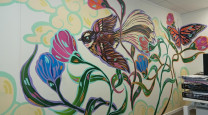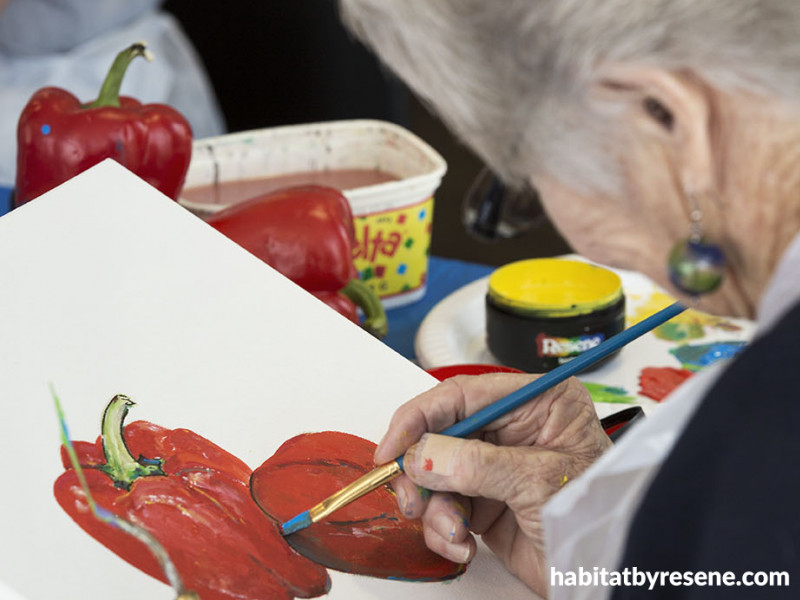
Art as an antidote
24 Jun 2020
For many years, art and creativity have proved to be an effective outlet for self-expression and healing. With the rise of popularity in activities like adult colouring books, painting parties and kintsugi workshops – which teach the Japanese art of repairing broken pottery by mending it with gold – we’ve been reminded that art has long provided a way for humans to work through the tricky ebbs and flows of life and offered creative relief in trying times. While many innovative and unique methods of therapy exist today, none are quite so colourful as art therapy – a technique that’s used widely.
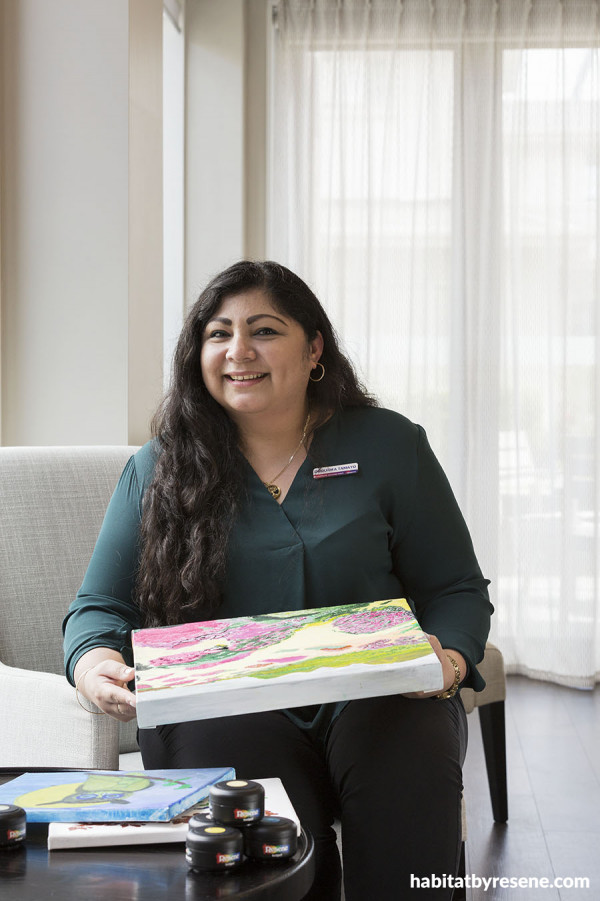
Diversional Therapist Orquidea Tamayo Mortera poses with colourful works created during an art therapy session.
Orquidea Tamayo Mortera, President for the New Zealand Society of Diversional and Recreational Therapists, uses the power of art therapy – and a range of Resene testpots – to help those under her care. Her work as a registered Diversional Therapist involves human-centric recreational programs aimed at enhancing wellbeing and supporting the development of core wellness dimensions, from social to intellectual, sexual, emotional, spiritual, cultural and physical.
Art therapy is also frequently used in aged care to support healing and fight against loneliness and social isolation – two common and debilitating realities for people in their advanced years. “People use art and media to explore feelings, develop social skills, manage behaviour, cope with addiction, become more self-aware, reconcile emotional conflict, reduce anxiety and increase self-esteem,” says Orquidea.
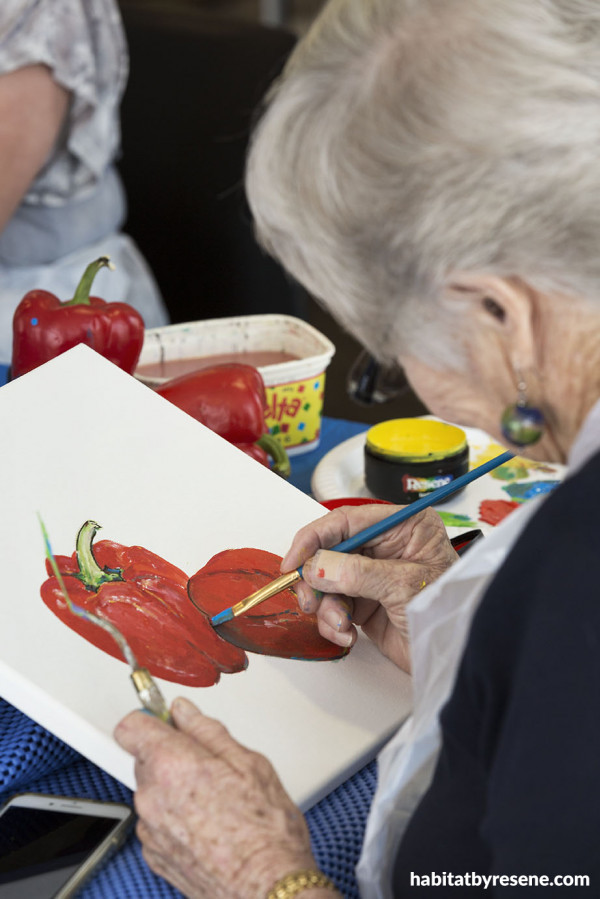
This colourful piece created during an art therapy session features Resene Havoc and Resene Jalapeno.
The power of colour in art therapy is monumental, with therapists like Orquidea favouring vibrant colours in order to bring about positive impact. “We do our best to influence our clients in using strong and bright colours that will have a powerful but positive effect on their emotions.”
Discussing the kind of tones that can enhance wellbeing, Orquidea finds bright reds, yellows and neon greens are particularly energising, which can help people feel more alert, whereas blues seem to be preferred by people living with dementia. These colours are applied to a number of mediums, from rocks to paper, without any expectation or pressure to achieve perfection.
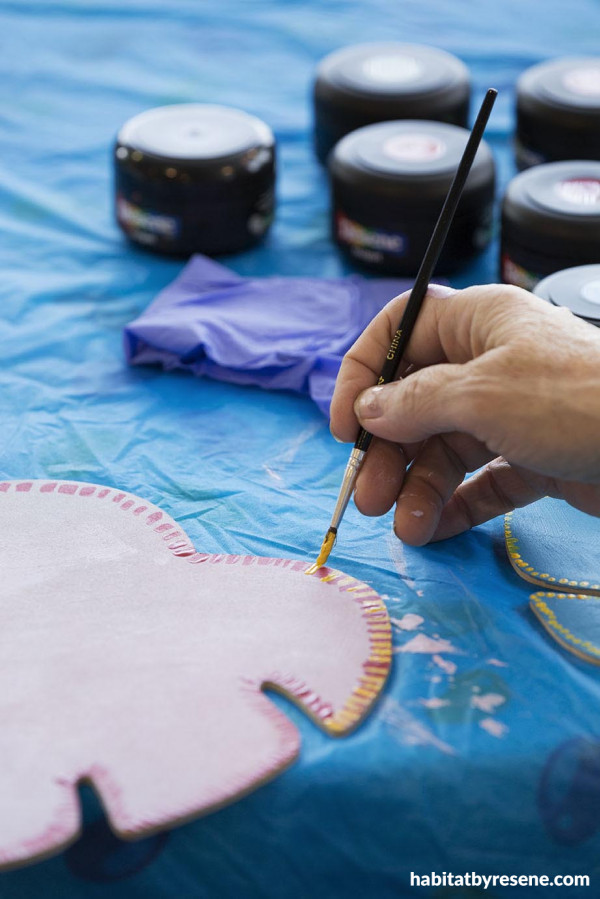
An art therapy participant painted this pink leaf artwork in Resene Mozart, Resene Jalapeno and Resene I Dare You
Resene Turbo, Resene Daredevil, Resene Limerick, Resene Ruby Tuesday and Resene Point Break — all bright, beautiful and cheerful tones – are just a handful of hues preferred by Diversional Recreational Therapists. Being born in Mexico, Orquidea is particularly fond of sunny colours and the positive effect they can have. She is currently loving Resene Paua, Resene Geraldine and Resene Lime.
With health and safety and infection control policies being a crucial part of aged care, Resene testpots are a great option. “The size is perfect and we don't have to be pouring out of big bottles. We also love the texture and also that they are safe to use.”
The ways in which art therapy can help people varies depending on what struggles they’re going through. However, as Orquidea adds, building a sense of well-being and function in day-to-day living are two great reasons Diversional Recreational Therapists utilise it so much.
To learn more about the New Zealand Society of Diversional and Recreational Therapists’ important work, visit www.diversionaltherapy.net.nz.
images Jessica Gernat
Published: 24 Jun 2020


